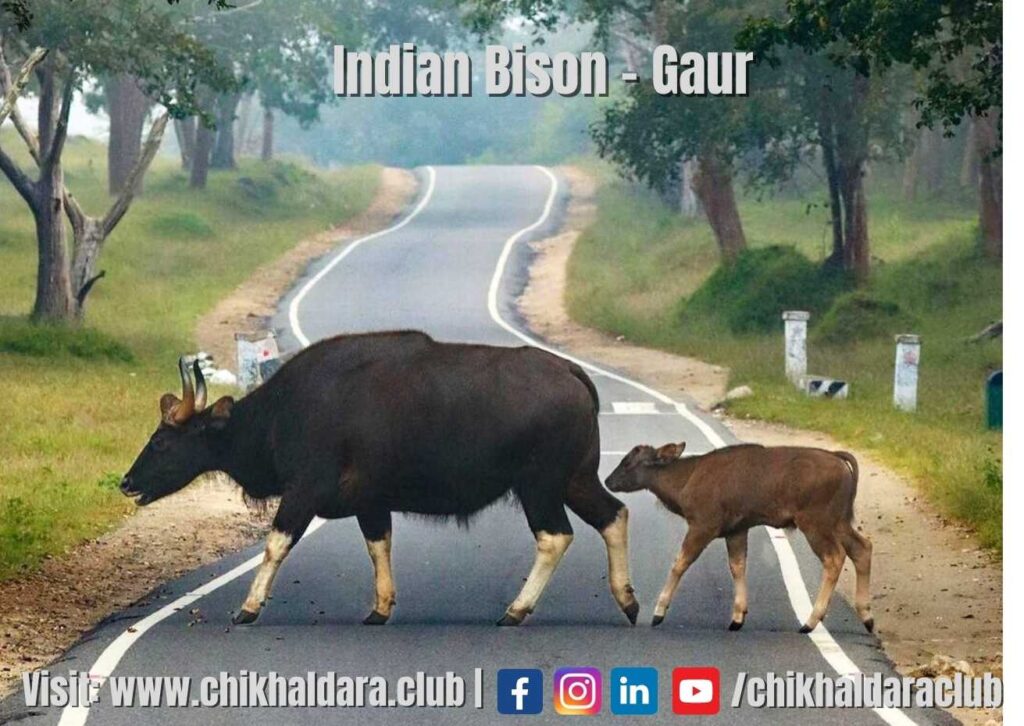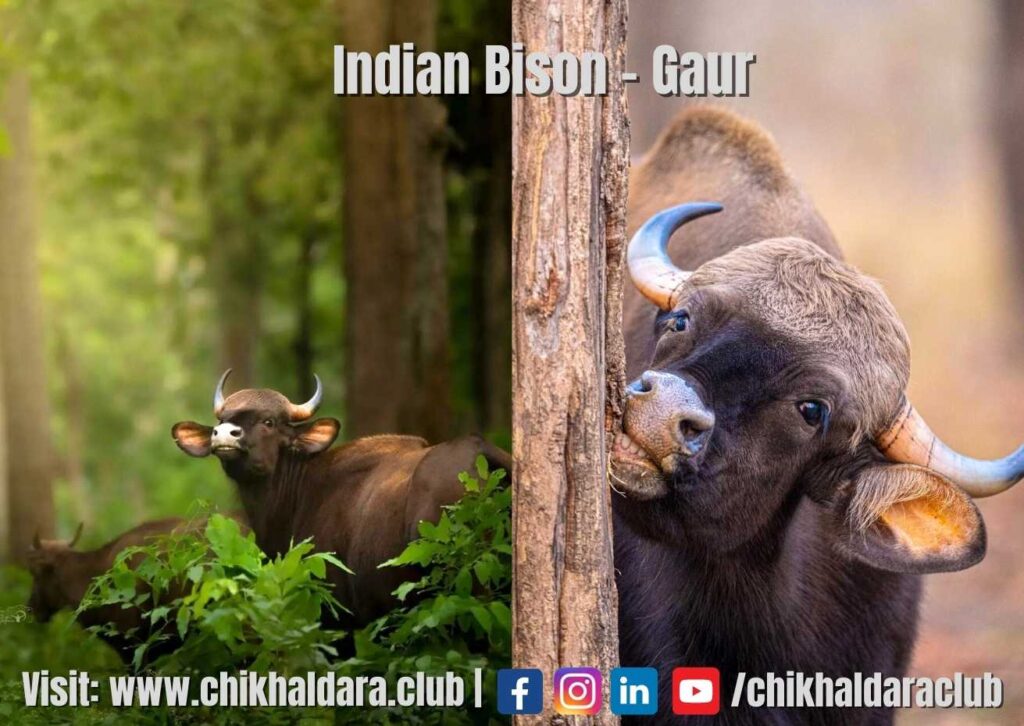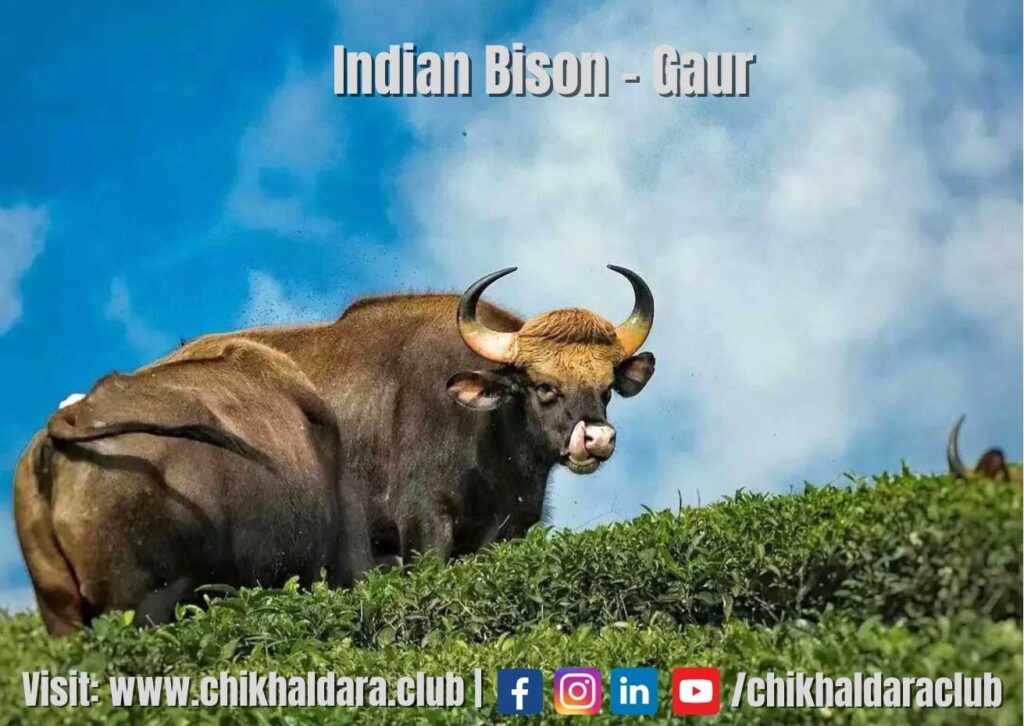Table of Contents
Bison, also known as Gaur, is the largest wild cattle species found in India. They are a fascinating and powerful animal that is highly valued for its ecological and cultural importance. It is a massive and powerful animal with a dark brown coat, curved horns, and a distinctive hump on its shoulders.
Indian Bison is a herbivore and feeds on grass, leaves, and fruits. They are mostly found in dense forests and grasslands in southern India, and they play an important role in maintaining the ecological balance of their habitat. However, habitat loss and hunting have led to a decline in their populations, and they are now listed as a vulnerable species.
Physical Characteristics
Bison is a large animal with a bulky, muscular body, and a hump at the shoulders. They have a short, glossy, dark brown to black coat with a lighter underbelly, and their legs are black. The bulls (males) are larger than the cows (females) and can weigh up to 1000 kilograms, while the cows can weigh up to 700 kilograms. The horns of Gaur are curved and pointed and can reach up to a meter in length.
Habitat
Bison is found in various regions of India, including the Western Ghats, Eastern Ghats, Himalayan foothills, and some parts of Central India. They prefer forested areas with dense undergrowth and are also found in grasslands and open savannas. Gaur is mostly found in protected areas like wildlife sanctuaries and national parks, such as Bandipur National Park, Nagarhole National Park, Mudumalai National Park, and Periyar National Park.

Diet
Bison is primarily a herbivorous animal and feeds on a variety of vegetation, including grasses, leaves, and fruits. They are also known to eat bamboo shoots and aquatic vegetation, making them adaptable to different habitats.
Indian Bison Size and Weight
The Indian Bison, also known as the Gaur or Indian Wild Buffalo, is a massive and powerful animal. Adult males can weigh up to 1000 kg (2200 lbs) and stand up to 1.9 meters (6.2 feet) tall at the shoulder. Females are slightly smaller, weighing up to 700 kg (1540 lbs) and standing up to 1.7 meters (5.5 feet) tall at the shoulder. The Indian Bison has a stocky and muscular build, with a distinctive hump on its shoulders and curved horns that can grow up to 1 meter (3.3 feet) in length.
Behavior
Bison is a social animal that lives in herds, usually consisting of females and their offspring. The males are solitary and only join the herds during the mating season. They communicate with each other through various sounds, including grunts, roars, and bellowing. Gaur is known for its aggressive behavior, and they can become highly territorial during the mating season.

Conservation
Bison is listed as vulnerable by the International Union for Conservation of Nature (IUCN) due to habitat loss, hunting, and poaching. The Indian government has taken several measures to conserve and protect Gaur, including the establishment of protected areas like wildlife sanctuaries and national parks. The Wildlife Protection Act of 1972 provides legal protection to Gaur and prohibits hunting or poaching of this species.
How can I see bison in India ?
If you want to see Indian Bison or Gaur in India, you can visit any of the wildlife sanctuaries or national parks where they are known to be present. One of the popular wildlife reserves to see Indian Bison in India is Melghat Tiger Reserve in Maharashtra. The best time to visit these reserves is during the winter months, from October to February, when the weather is pleasant, and the animals are active. It’s recommended to go on a jungle safari with a trained guide or naturalist, who can help you spot these magnificent animals in their natural habitat.
You need to book jungle safari and try to find the bison during jungle safari.
Find More about;
Melghat Tiger Safari
Chikhaldara Jungle Safari
Semdoh Jungle Safari
Summary
Bison is a magnificent and powerful animal that plays a vital ecological and cultural role in India. With continued conservation efforts, we can ensure that this majestic animal continues to thrive in the wild and remains a symbol of India’s natural heritage.
Frequently Asked Questions | FAQs
Is bison a cow or buffalo?
In India, the term “bison” usually refers to the Indian Bison, which is also known as the Gaur or Indian Bison. It is not a cow or a buffalo, but rather the largest wild cattle species found in India. It is a distinct species and belongs to the Bovidae family, just like cows and buffaloes.
What eats a bison?
In India, adult Indian bison, also known as gaur, have few natural predators due to their large size and strength. However, tigers and saltwater crocodiles have been known to prey on gaur calves or weakened adults. Additionally, habitat loss and poaching are significant threats to gaur populations in India.
Is bison a cow?
In India, the term “bison” usually refers to the Indian Bison, which is also known as the Gaur or Indian Bison. It is not a cow, but rather the largest wild cattle species found in India. It is a distinct species and belongs to the Bovidae family, just like cows.


